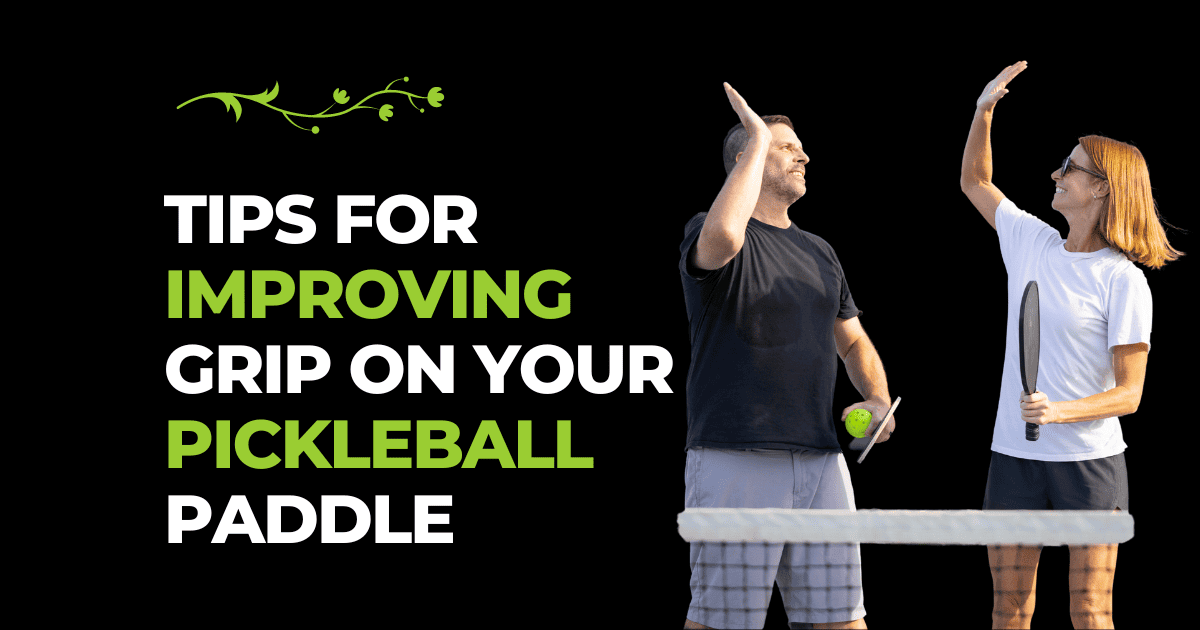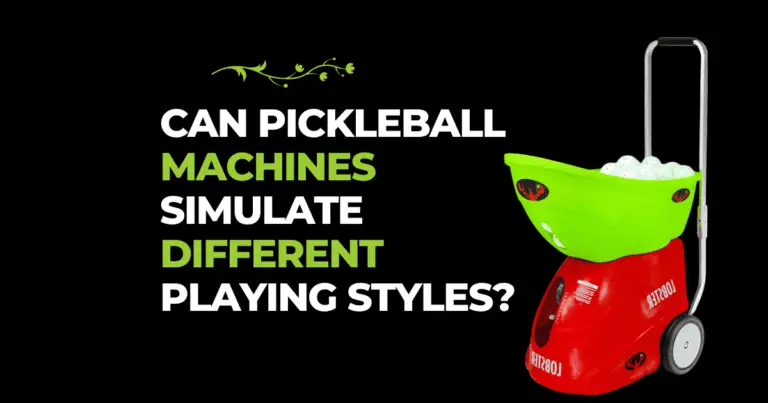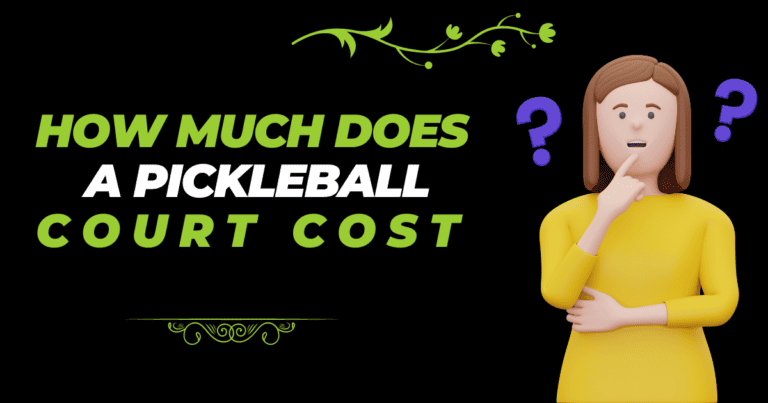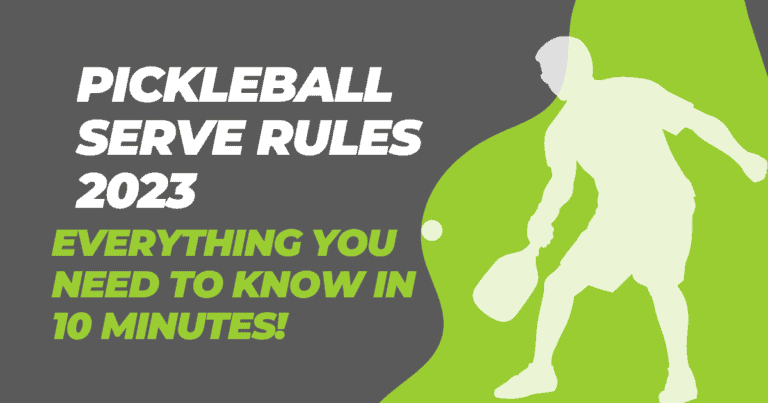Pickleball is a fun sport that combines elements of tennis, badminton, and ping pong. One of the keys to improving your pickleball game is having the proper grip on your paddle. With a good grip, you’ll be able to generate more power on your shots, have better control, and reduce hand fatigue.
In this guide, we’ll go over several techniques and tips for Improving grip on your pickleball paddle. Whether you’re new to the sport or an experienced player looking to step up your game, improving your grip can make a huge difference. Let’s get started!
Assessing Your Current Pickleball Paddle Grip
Before making any changes, take a look at how you’re currently holding the paddle. Here are three common pickleball grip types:
- Overlap Grip: With this beginner grip, the index finger of your paddle hand overlaps your other fingers. This allows for some wrist movement but less control.
- Power Grip: This grip wraps all your fingers and thumb around the handle. It maximizes power but reduces touch shots.
- Modified Grip: A hybrid of the overlap and power grips. The index finger overlaps slightly while the other fingers wrap around the handle. Offers a balance of power and control.
Take note of your grip style and where you place your hand on the paddle. Pay attention to any hand or wrist pain that results from your current grip. This assessment will help guide the changes you need to make.
Adjusting Hand Placement
One of the easiest ways to improve your grip is adjusting where your hand sits on the paddle handle. Here are some placement tips:
- Move your hand up slightly from the bottom of the handle. This gives you more leverage and power.
- Don’t grip too close to the paddle head. This limits your wrist movement.
- Use the crease near the base of your thumb as a guide. Place it about 1-2 inches down from the paddle head.
- Try different hand positions to find the most comfortable spot with optimal power and control.
- Consider getting a paddle with an ergonomic or contoured grip that fits your hand. This can encourage proper hand placement.
Modifying Your Grip Type
Next, you may need to modify the actual grip style you’re using. Here’s how to adjust:
Switching from the Overlap to Modified Grip
- Gradually move your index finger down the paddle handle to reduce the overlap.
- Rest the side of the paddle against the last knuckle of your index finger.
- Wrap your thumb and other fingers comfortably around the handle.
- Maintain a loose but secure grip.
This gives you better finger control while still allowing wrist movement.
Switching from the Power to Modified Grip
- Relax your grip slightly so there’s space between the handle and palms.
- Gradually release your index finger so it overlaps just slightly.
- The crease near your thumb can guide the index finger placement.
- Keep other fingers wrapped solidly around the handle.
You’ll still have a strong grip with this adjustment but gain back some finesse.
Trying the Continental Grip
This specialized grip is used by some pickleball pros. To do it:
- Place your thumb and index finger on opposite sides of the paddle handle as if holding a hammer.
- Let the other fingers wrap around comfortably.
- Keep a firm but not tense grip.
The continental grip requires practice but allows for wrist snap and quick reactions at the net.
Remember to experiment to see which grip style works best for your playing style and strengths.
Maintaining Proper Wrist and Arm Position
Your grip can be perfect, but poor wrist and arm form can still hinder your game. Here are some tips:
- Keep your wrist in a neutral, relaxed position. Avoid bending it sharply up or down.
- Don’t squeeze the handle too tightly with your fingers. Let the paddle sit loosely in your hand.
- Use your shoulder and upper arm for swinging rather than only the wrist. This generates more power.
- Allow your elbow to bend naturally on the forward swing. Avoid locking it in place.
- Lower your arm and paddle below waist level when waiting to return a shot. This reaction position gives you a better preparation.
Take notice of any tension, tightness, or discomfort in your wrist, arm, or shoulder when playing. Adjust your grip or stance accordingly until it feels right.

Choosing the Right Paddle Size and Weight
An improperly sized or weighted paddle can sabotage even the best grip technique. Follow these fitting guidelines:
- Opt for a midsize paddle head as a beginner. Large heads add power but reduce control.
- Make sure the paddle length allows you to comfortably reach the center of the head when gripping the handle.
- Lightweight paddles (6-7 ounces) are best for touch shots. Heavier ones (8+ ounces) provide more power.
- Consider edge guard thickness. Thicker guards increase grip diameter. Thinner ones reduce cushion.
- Test different paddle weights and grip sizes until you find the most comfortable fit.
Having the right paddle for your hand size, strength, and skill level makes it much easier to utilize proper grip technique.
Maintaining Proper Pickleball Hand Care
In addition to technique, caring for your paddle hand is key for maximizing grip and avoiding injury. Follow these hand care tips:
- Warm up hands before play by shaking them out and doing some gentle finger stretches.
- Apply athletic tape over blister-prone areas for friction protection.
- Use gloves or paddle wraps to absorb sweat and impacts. Change frequently.
- Apply moisturizing lotion after play to condition skin and prevent cracks.
- Treat any soreness or swelling with ice packs, anti-inflammatory medication, or muscle rubs.
- See a doctor about persistent wrist, hand, or finger pain that won’t resolve with rest.
Well-conditioned hands are essential for any sport that requires a firm grip on equipment. Take time to properly prepare your paddle hand and treat any issues promptly.
Common Pickleball Grip Mistakes to Avoid
Now that you know how to properly grip your pickleball paddle, be sure to avoid these common mistakes players make:
- Gripping too low on the handle. This reduces wrist flexibility.
- Squeezing too tightly. Causes hand tension and fatigue.
- Using too much wrist. Reduces power and leads to injury. Rely more on your shoulder and arm.
- Not maintaining a relaxed wrist. This makes it hard to control the angle of your shots.
- Gripping the paddle mostly with your fingers. Secure it with your whole hand for best results.
- Having an overly large or small paddle. Get one suited for your hand size.
- Not warming up hands before play. Stretch fingers thoroughly to avoid strains.
With the right adjustments to your grip technique and paddle fit, you can avoid these common pitfalls.
Comparing Pickleball Grip Types
| Grip Type | Pros | Cons |
| Overlap | – Beginner friendly- Allows wrist movement | – Less control- Limited power |
| Power | – Maximum power- Secure grip | – Reduced touch shots- Can cause fatigue |
| Modified | – Balance of power & control- Comfortable | – Takes practice |
| Continental | – Great for quick reactions – Allows wrist snap | – Requires expertise- Not for beginners |
Summary
🏓 There are clearly many small adjustments that can make a big difference in your pickleball paddle grip. Take the time to assess your current grip, hand placement, paddle size, wrist position, and other factors. Making even subtle changes, like moving your hand an inch down the handle, can significantly improve your game. Be patient, keep practicing your grip, and find what works best for your playing style. With the right paddle grip, you’ll be crushing pickleball shots in no time! Now grab your paddle and get ready to improve your game. 🥎
Frequently Asked Questions About Pickleball Paddle Grips
What’s the best pickleball paddle grip for beginners?
The overlap grip is usually the easiest for pickleball beginners to start with. It allows some wrist movement while keeping the paddle more secure. As you improve, you can graduate to the modified grip.
Does paddle grip size matter?
Yes, you want to choose a grip size that fits your hand well. If the grip circumference is too small, you’ll have to squeeze tightly. If it’s too large, the paddle will be hard to control. Midsize grips around 4 1/4 inches are ideal for most.
Should my whole hand wrap around the paddle grip?
Generally, yes. You want the handle firmly secured in your palm and fingers for best control. Don’t grip only with your fingers. However, the index finger can overlap slightly in a modified grip.
How tight should I hold the paddle?
Hold it firmly but not in a death grip. You should have space to move it slightly as you swing. If you squeeze too tight, it leads to muscle fatigue and reduced feel.
What’s better: thicker or thinner paddle grips?
This comes down to personal preference. Thicker grips around 1/8 inch give more cushion and shock absorption. Thinner grips provide more court feedback through your hand but less comfort.
Should I use gloves or grip tape on my paddle?
It’s not mandatory, but these accessories can help absorb sweat and impacts. They also reduce friction that can lead to blisters. Change tape regularly as it loses adhesion.
How do I know if my grip needs changing?
Signs you may need an adjustment include hand fatigue, loss of control, wrist or arm pain, and inability to generate power. If your current grip is causing issues, try the tips in this article.
Get Out There and Get a Grip!
Now that you’re armed with pickleball paddle grip knowledge, it’s time to put it into action! Ditch that sloppy hold, get your hands and wrist in proper position, and find your pickleball focus. Grip it and rip it on the court as you dial in your newfound skills. Show off that hand dexterity with laser-guided dinks and paddle-bending power shots. Your opponents will be jealous of your grip game. Just remember to ease up occasionally – no need for a white-knuckle hold during a friendly match! Loosen up, have fun, and get ready to develop a clutch new paddle grip.





![Pickleball Outfit Ideas for Women’s [Stylish Outfits] 2023](https://thunderpickleball.com/wp-content/uploads/2023/11/Pickleball-Outfit-Ideas-for-Womens-3-768x403.png)


2 Comments